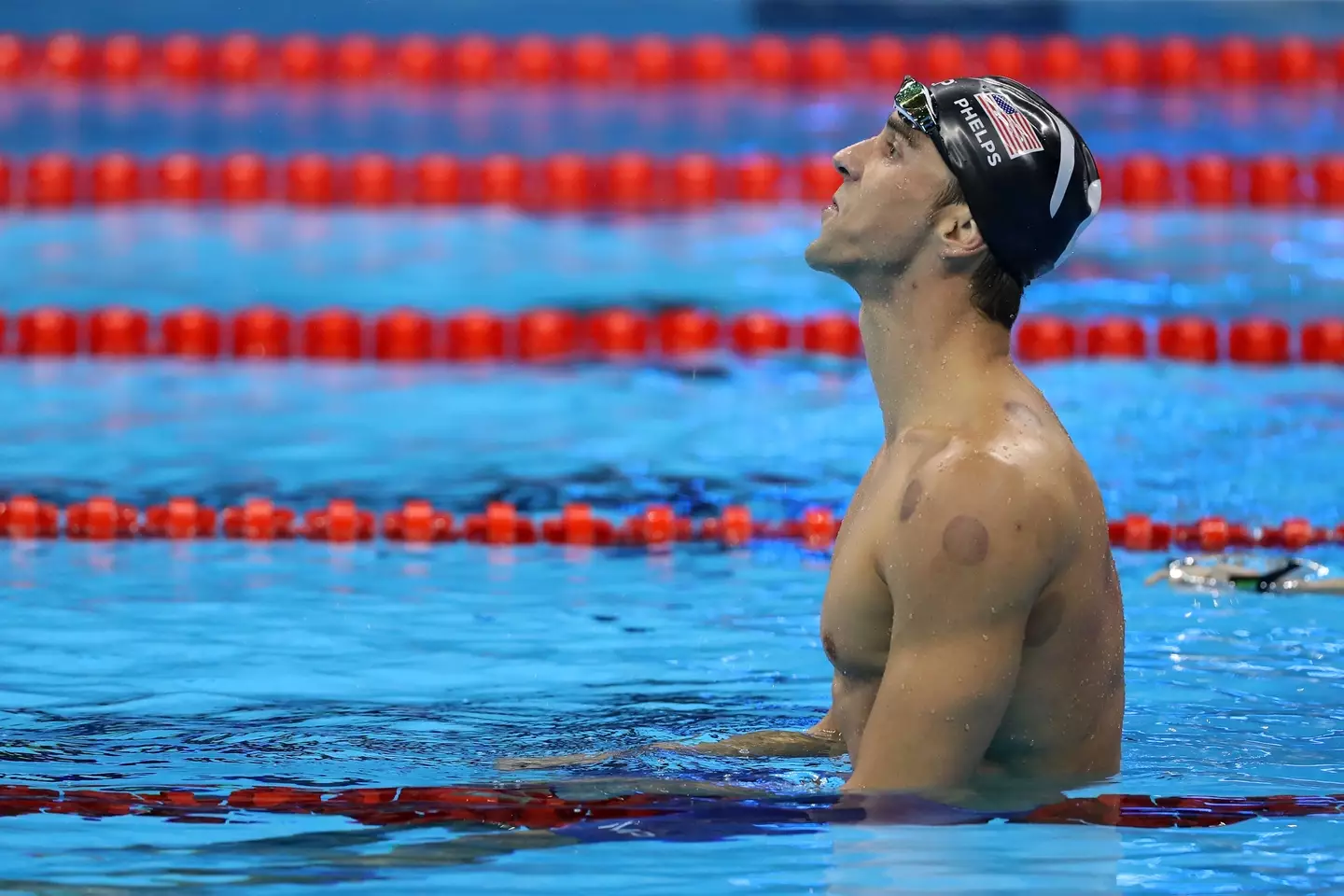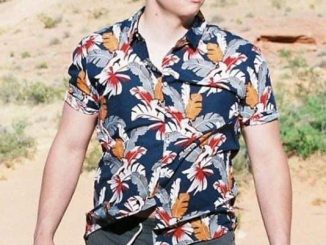
This year’s Olympics are now in full swing and it’s all eyes on the athletes.
From archery and shooting to athletics and gymnastics, there’s all kind of sports taking place across Paris, France, at the moment.
One fan-favorite sport to watch is the swimming, and this year there’s a whopping 854 athletes from 187 different countries competing.
But there’s a common theme you might have spotted with some of the swimmers and that’s the unusual dark red circles they have on their backs.

While it might look like they’ve had a fight with an octopus and lost, there’s a very different reason for the odd markings.
It turns out that the large spots are from cupping therapy – an ancient healing technique that involves placing cups on the skin to create suction and increase blood flow to the area.
The unconventional method is supposed to help with muscle recovery and is used as a type of deep tissue massage.
Some athletes were spotted with cupping therapy bruises back at the Rio Olympics in 2016, and it’s still seemingly popular now.

Gymnast Alexander Naddour told USA Today back in 2016 that cupping was supposedly the ‘secret’ to his health.
He added: “It’s been better than any money I’ve spent on anything else.”
Away from the Games, basketball player Kyle Singler has also praised cupping therapy.
“The bruises do look more intense than what they actually feel like, but the benefit from it is really great,” he previously insisted.
Singler continued to tell Sports Illustrated: “You’re not necessarily getting the immediate response that you might want but over time it does help with recovery and loosening tissue and stuff like that.”
But does cupping therapy actually work according to experts? It’s seems as if the jury’s still out.

According to Harvard Health, some studies have found that cupping might provide some relief for a number of musculoskeletal and sports-related conditions. The quality of this evidence was ‘limited’, however.
Elsewhere a 2022 review found that wet (as opposed to dry cupping) was effective for lower back pain.
While the bruises people get from cupping are pretty gnarly, the therapy is generally seen as safe to practice – even if people aren’t 100 percent on how affective it is.
“Most experts agree that cupping is safe. As long as those treated don’t mind the circular discolorations (which fade over a number of days or weeks), side effects tend to be limited to the pinch experienced during skin suction,” Harvard Health explains.
“It’s quite unusual that cupping causes any serious problems (though, rarely, skin infections have been reported).”
There you have it, folks.
SCHOOL EMBARRASSES TEEN OVER OUTFIT—HER DAD’S HILARIOUS REVENGE IS UNFORGETTABLE

In August 2017, Tony Alarcon’s phone rang unexpectedly.
Like many parents, he thought it might be a telemarketer. But this time, he answered the call.
Hearing from the school can be nerve-wracking for any parent. Tony immediately started worrying—was his daughter, Demetra, okay? Had something happened?
What he found out left him surprised.
It was a hot summer day in Northern California, with temperatures reaching 90 degrees. Tony had dropped off his 13-year-old daughter, Demetra, at school that morning. She wore a blue romper to stay cool in the heat, and neither of them thought the outfit would cause any issues.
Demetra, a student at Raymond J. Fisher Middle School in Los Gatos, California, had simply dressed for the weather.
Not everyone agreed with Demetra’s outfit. A teacher at her school said her romper was “too distracting” for the boys.
When the teacher told Demetra that her outfit was too short, her dad, Tony, rushed back to the school with a change of clothes—jean shorts and a tank top. But the school said those clothes were also inappropriate.
Tony was shocked. He asked Demetra to bend over and touch her toes in front of the school administrator. “Nothing is hanging out. There’s nothing inappropriate. I don’t understand this dress code rule,” he told TODAY.
Still, the school said her clothes were “distracting.” Since it was 90 degrees outside, Tony had no choice but to go to his car and grab a pair of leggings for Demetra to wear.
Demetra felt embarrassed.
Tony expressed his frustration, saying, “She’s just a kid. She’s only 13. She’s not trying to be a sex symbol. She just wants to be comfortable and attend class, but we’re not giving her that chance.”
This wasn’t the first time Demetra had been in trouble for her clothes. Just a week before, she was called out for a visible bra strap. “When I got dress coded last week, they said my bra strap was showing,” Demetra told the *San Jose Mercury News*. “Like, I’m wearing a bra—what’s the big deal?”
Tony, a successful investment advisor and father of two, didn’t let it go. Angry at what he saw as an unfair rule that mostly targeted girls, he took his complaint to social media. Parents from all over the country showed their support, agreeing that the school’s dress code was outdated and unfair to girls.
“Demetra’s not the only one. If you sit in the school parking lot, you’ll see that,” Tony said. “Lots of girls just want to be comfortable, but they feel forced to wear leggings even when it’s 100 degrees outside.”
Tony believed that parents, not schools, should decide if their children’s clothes are appropriate. He was also worried about how being told their clothing is a “distraction” to boys could affect young girls emotionally in the long run.
The story quickly got attention from the media, with major news outlets reporting on Tony’s efforts to change the dress code. While the school didn’t speak on camera, they did release a statement:
“The Los Gatos Union School District believes that appropriate dress and grooming contribute to a productive learning environment,” the district said. “Students are expected to wear clothes that reflect the core values of our learning community.”
Tony’s efforts made an impact. His push for change led the Los Gatos Union School District to reevaluate its dress code to make it fairer and less strict for all students.
Lisa Fraser, the school’s principal, explained that the dress code rules, called “Fashion Faux Pas,” apply to both girls and boys. Some of the rules include no hats or hoods indoors, no visible underwear, no inappropriate logos or words, and shorts must have at least 4-inch inseams.
“There has always been a dress code,” Fraser told a newspaper. “These are basic rules for appropriate behavior. I can set guidelines for the school, but I want them to reflect the community’s values.”
In the end, Tony Alarcon’s persistence started an important discussion about how school dress codes affect young girls — showing that one parent’s voice can truly make a difference.
What do you think about the school’s dress code? Have you or your children faced a similar situation? Share your thoughts and experiences in the comments!



Leave a Reply